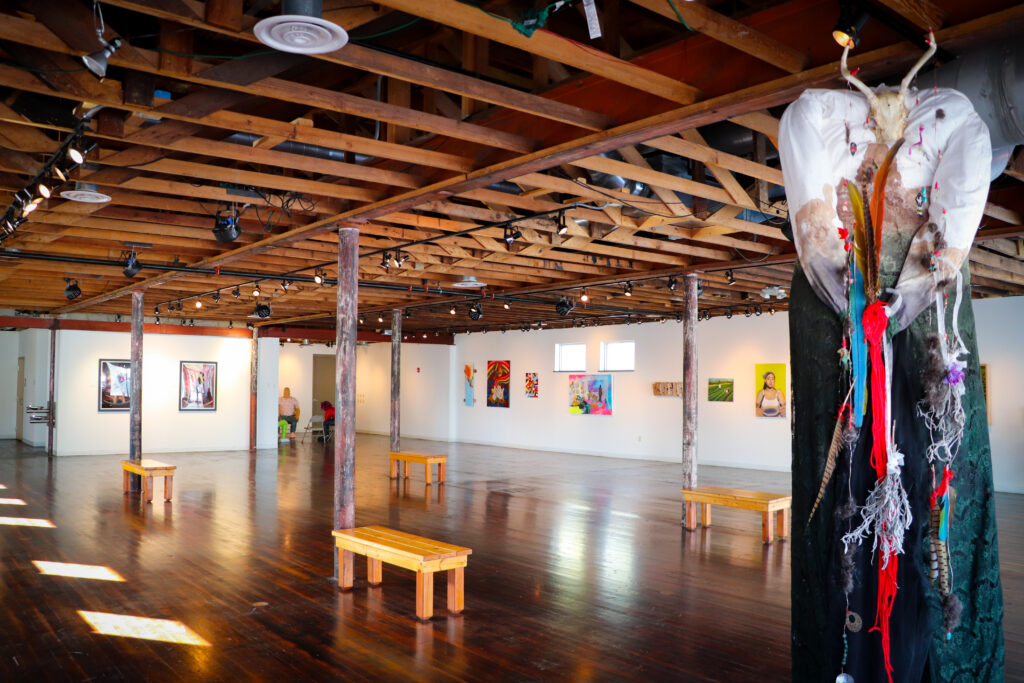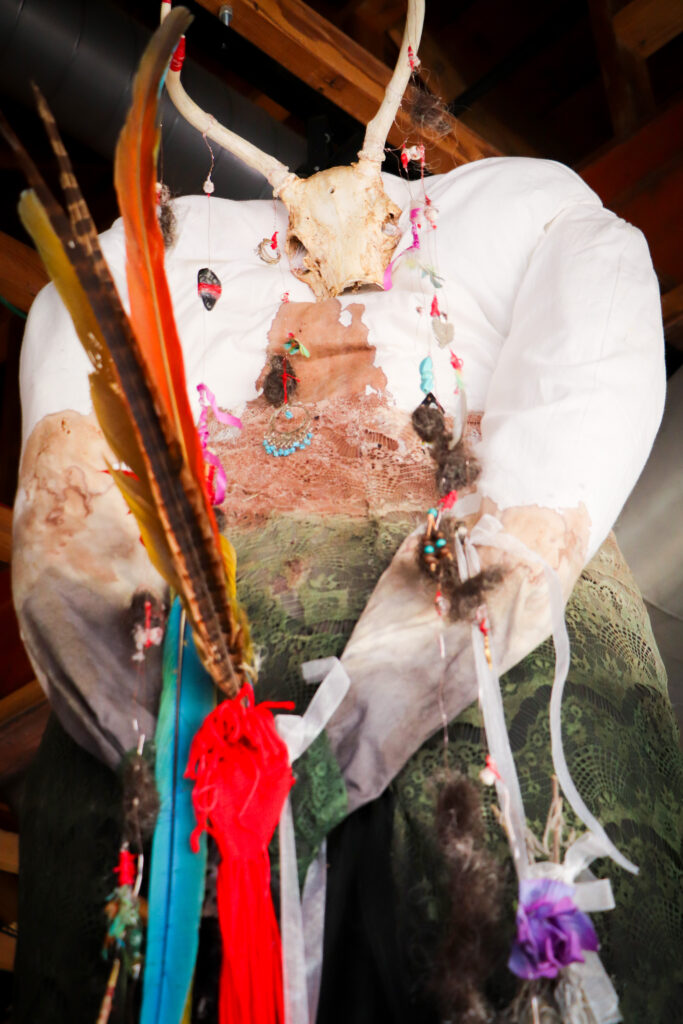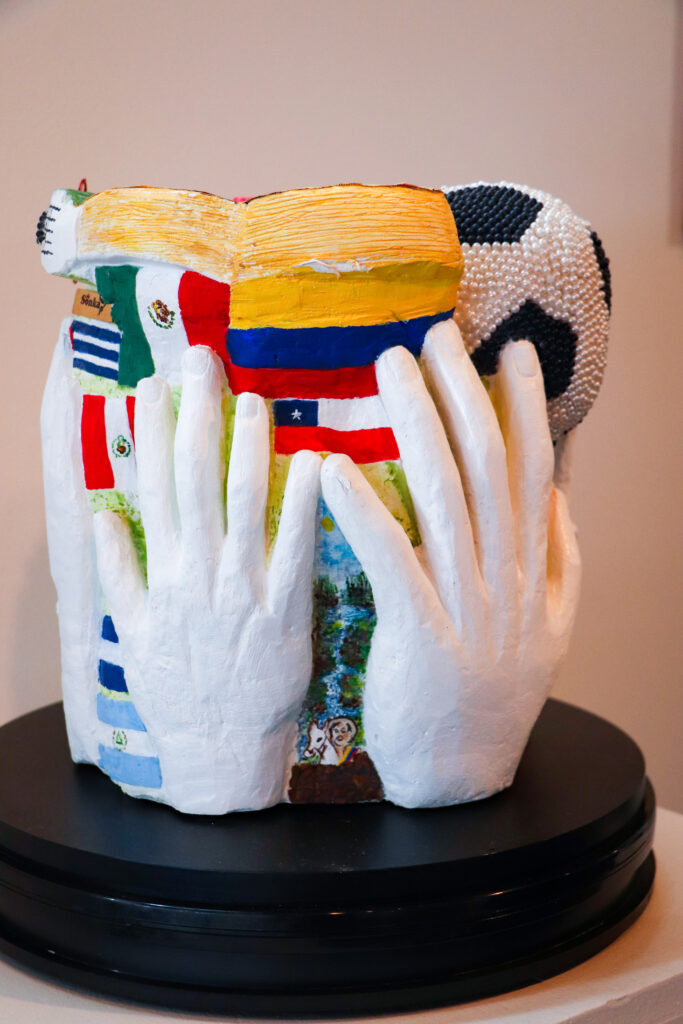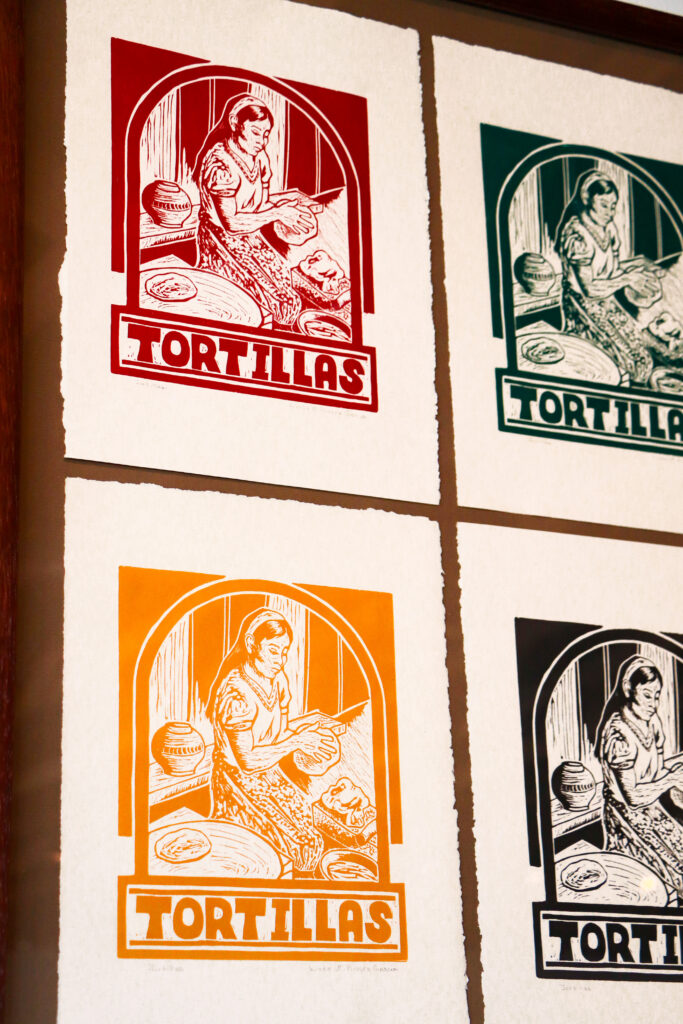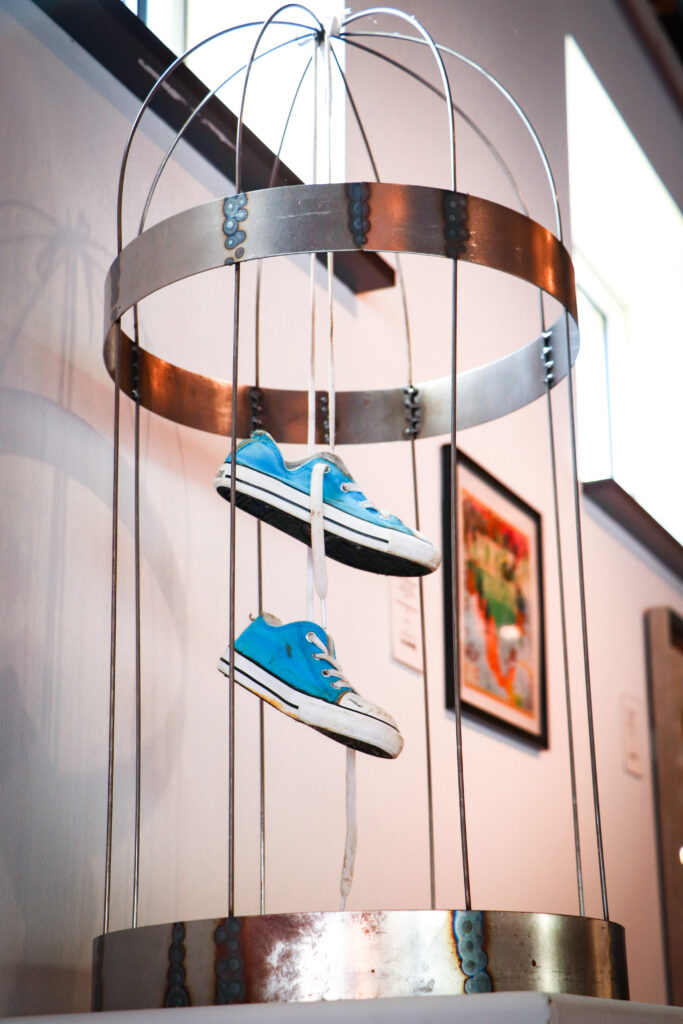For generations, Latinx artists have been instrumental in shaping conversations around immigration, racial justice, and identity—issues that are integral to American art. Despite this, they continue to be systemically underrepresented in many of the country’s cultural institutions. ArteLatinX addresses this disparity by offering a dedicated platform to showcase their stories with pride in a city where the Latinx population is the fastest-growing demographic.
ArteLatinX 2024, themed “United through Culture/Unidos a través de la Cultura,” has a clear mission: to enhance the visibility of Latinx artists and communities across the Great Plains while honoring their existence and contributions throughout history. Hosted by UNO’s Office of Latino/Latin American Studies (OLLAS), the fourth biennial exhibition marks its 10-year anniversary by returning to its original location at Bancroft Street Market.
Naturally, the Latinx experience is as varied as our history, encompassing narratives that can also be conflicting or uncomfortable. While it may be impossible to capture every perspective, an exhibition like this should strive to present as many as possible. I was thoroughly impressed by how much thematic ground is explored in this moderately-sized art show—it's well worth the visit.
Holding a pamphlet from the front desk that detailed the 27 featured artists and their works, I made my way toward the piece named "Best in Show"—a striking photograph by Xavier Tavera, titled simply, Vaquero (cowboy), displayed prominently on the back wall of the gallery.
The image commands attention: a man dressed in a denim jacket and cowboy hat sits on a wooden rocking horse with a coiled lasso in hand, exuding confidence. His gaze is fixed off into the distance, while the backdrop behind him bursts with colorful, dreamlike foliage in vivid hues of purples, blues, and greens. The contrast between the rugged figure of the cowboy and the almost surreal, painterly background creates an enchanting tension.
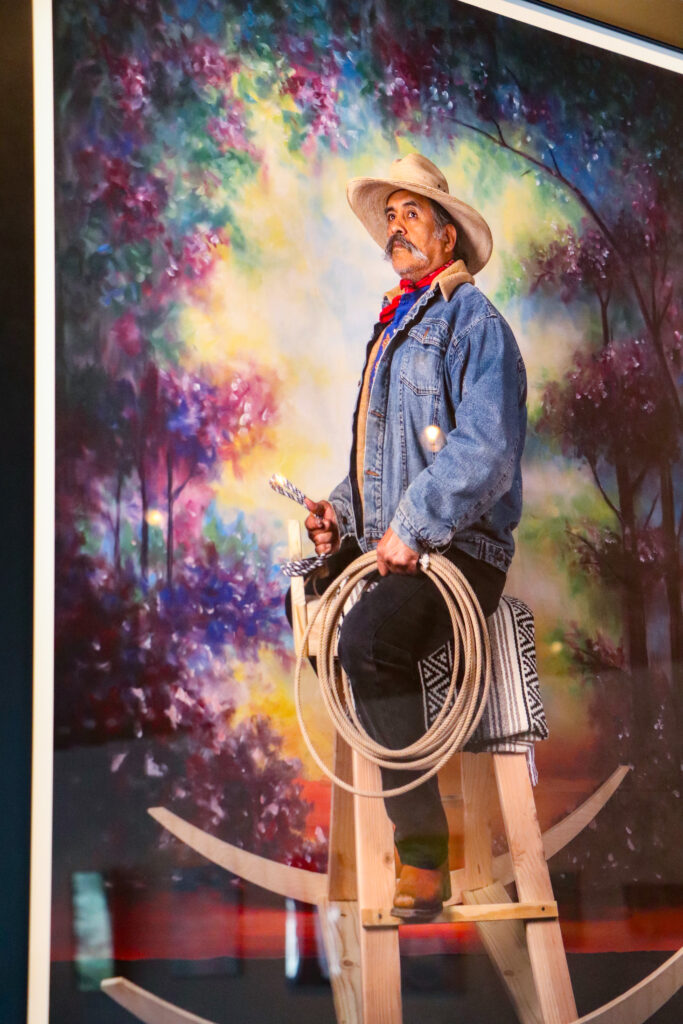
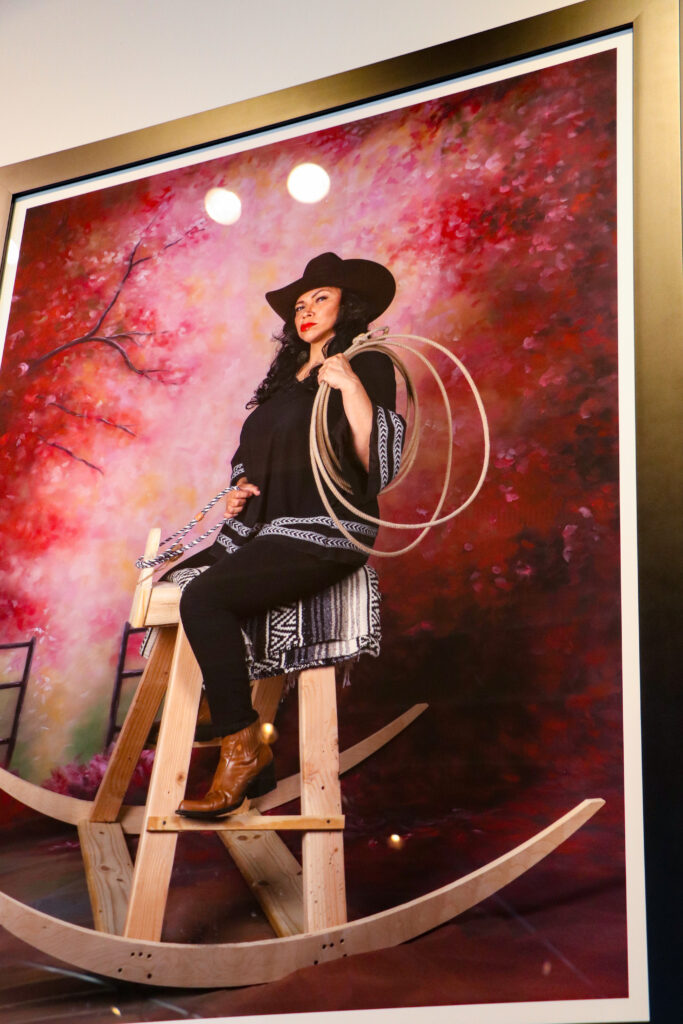
Equally powerful is Vaquera 1, a counterpart directly to the right of Vaquero. This time, a woman takes center stage, posed similarly on a wooden horse with a lasso, but the background blooms with vibrant pink foliage. Together, these works challenge traditional representations of the cowboy and invite deeper reflection on gender, age, tradition, and identity.
From there, I encountered After Party by Israel Mendez Lopez, a striking installation made from paper-mâché and aluminum folding chairs. Three life-sized figures sit together, their limbs hanging loosely. The colorful, fringed paper-mâché gives them a piñata-like appearance, though their postures evoke a sense of weariness rather than festivity. One figure sits slumped forward with its hands folded in its lap, another sitting straight upward and the third facing the others casually. The piece captures a striking moment of quiet in the aftermath of celebration and shared experiences.
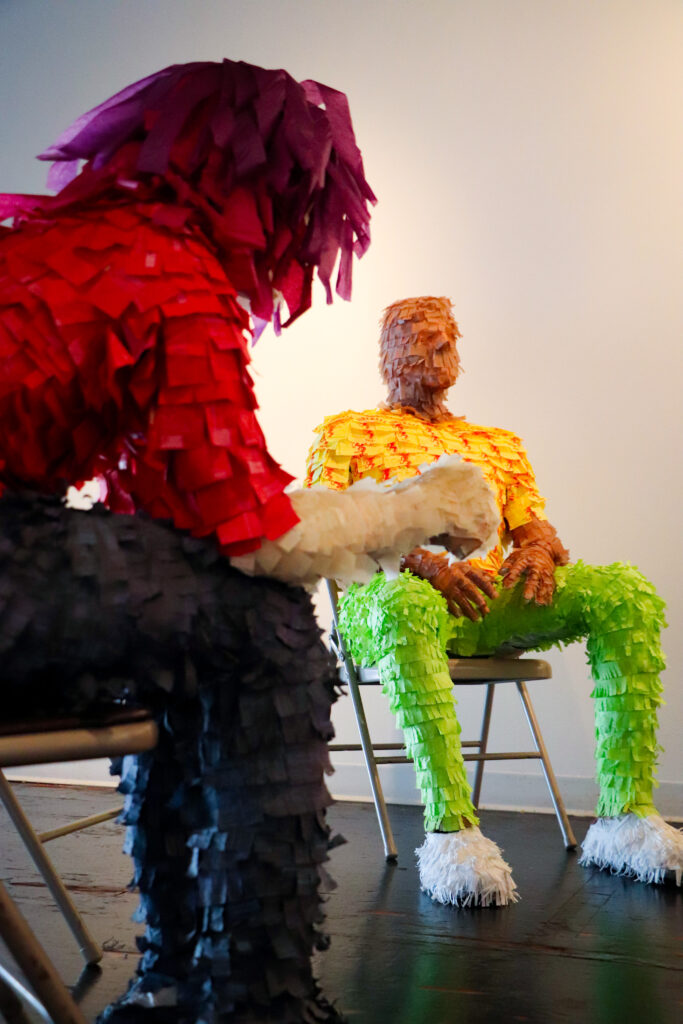
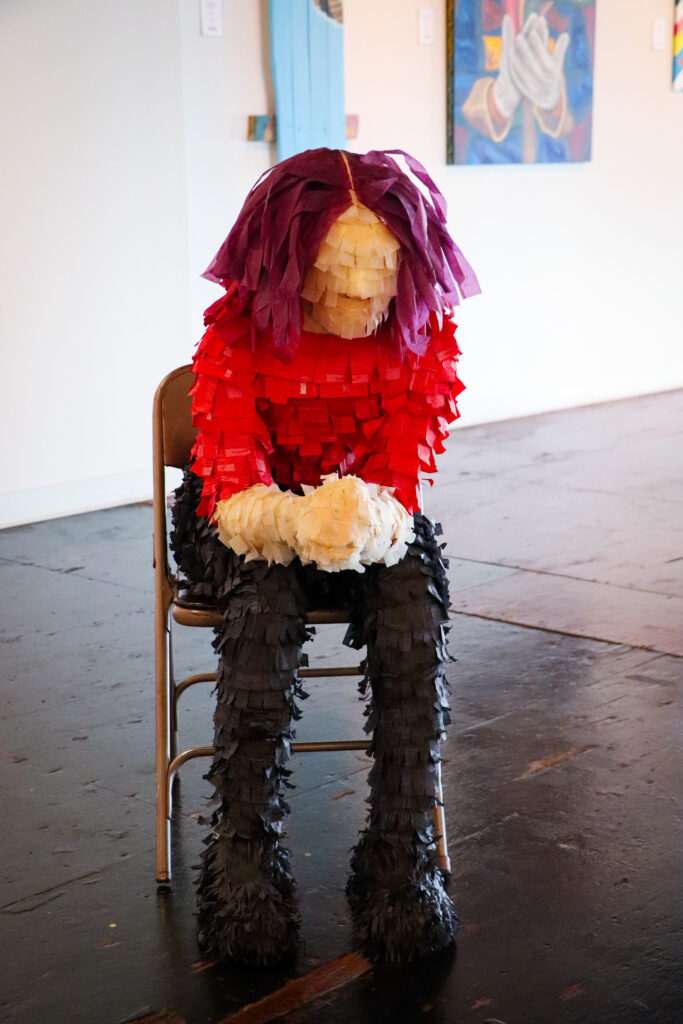
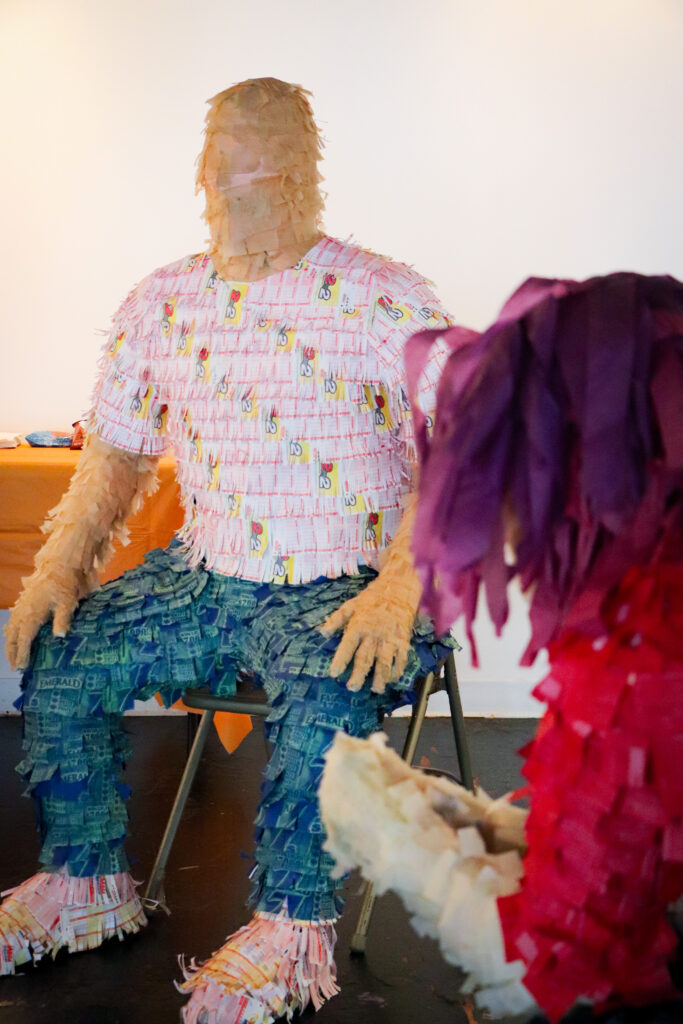
As I took in its full essence, my gaze was drawn to two striking portraits on the gallery’s right wall. On the right, Mala Santa (2 of 3) by Mikha "Mikhamik" Dominguez, is almost impossible to look away from. The subject—adorned in a glimmering gold cloth and crowned with a wreath of flowers—holds a rosary, clutching the beads as if suspended between reverence and rebellion. Smudged eye makeup and a fierce gaze evoke a blend of fragility and defiance, a contrast to the almost theatrical lighting that bathes the scene. The deep red spotlight that illuminates the subject and the soft blue of the backdrop feel like the tension between saintliness and sin—an embodiment of the title itself, Mala Santa, the “bad saint.” As a viewer, I saw a figure trapped in a complex space, at once sacred and profane.
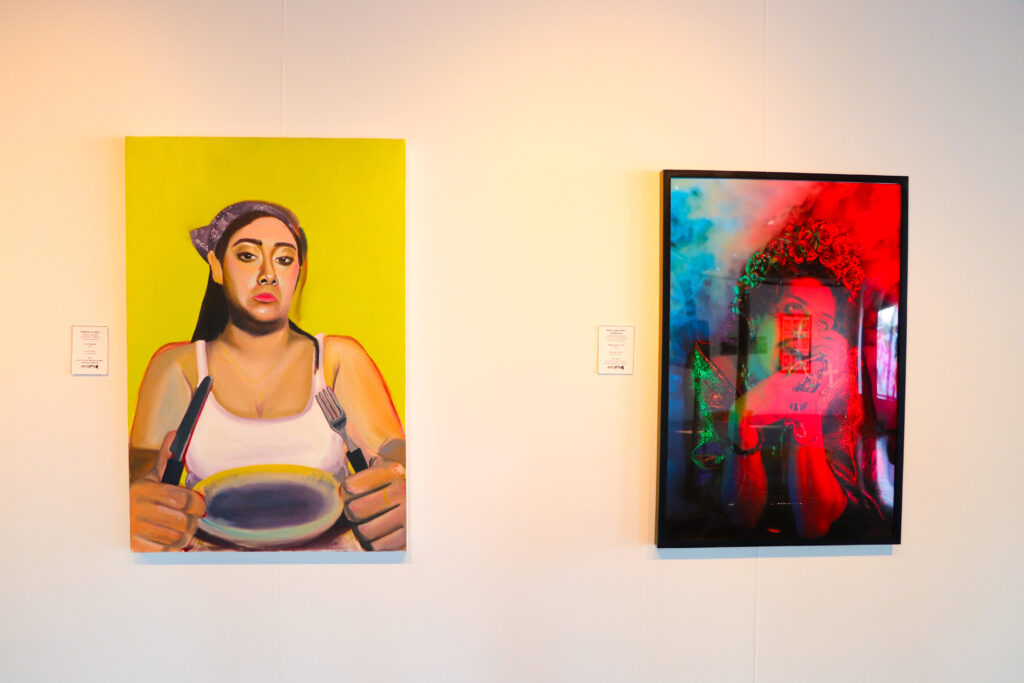
To its immediate left is La Chingona, in which Jennifer Alonso's subject stares directly into the viewer’s eyes, daring them to look away. Set against a sharp greenish-yellow background, the woman’s expression radiates a “no-nonsense” attitude. A fork in one hand, a knife in the other, and an empty plate before her, she isn’t waiting for permission to eat—she is commanding it. This oil painting flips the stereotype of the submissive Latina woman on its head, seemingly making a statement about power dynamics and gender roles—the title, La Chingona, a term in Mexican slang that translates roughly to "the badass woman," reinforces this subversion. This isn’t a woman confined to the kitchen or bound by societal expectations; she holds the reins unapologetically.
The diversity of the artists showcased in ArteLatinX is as remarkable as the works themselves. Spanning generations—from high school students to those in their seventies—these creators bring a wide range of experiences, identities, and artistic approaches. Despite varied gender expressions and multicultural influences, a common thread of resilience and pride runs through their work, uniting them in their shared mission to express the multifaceted Latinx experience.
OLLAS ensures that this message resonates beyond the gallery walls with a month-long series of events, including workshops, guest lectures, and a final keynote presentation on Oct. 18 to close out the season. At its core, it’s a powerful reminder that Latinx art is integral to the American story, and the work displayed here is a beacon for the paths yet to be forged.
As Dr. Adrian R. Duran, the committee chair, passionately puts it, “Let us salute the ancestors and homelands that have made us who we are and what we do possible. Let us remember that there is always work yet to be done, and we are the ones who must make it happen.”
ArteLatinx 2024 is on display at Bancroft Street Market through Oct. 18. For event details and gallery hours, visit unomaha.edu/college-of-arts-and-sciences/ollas.
